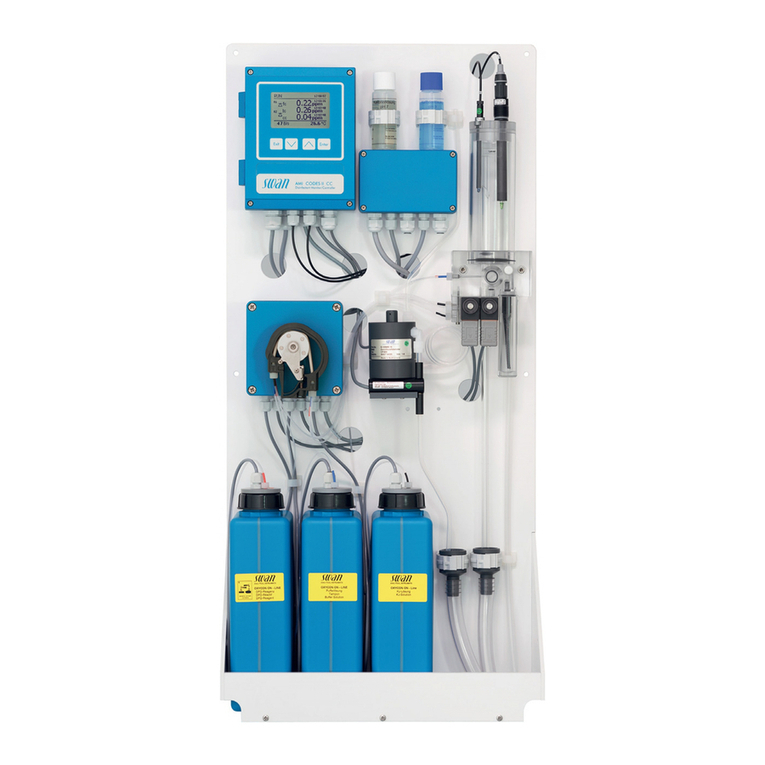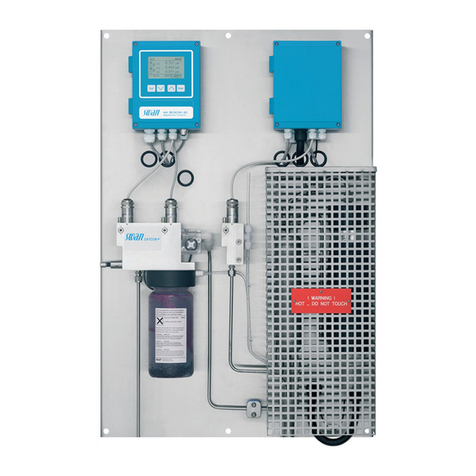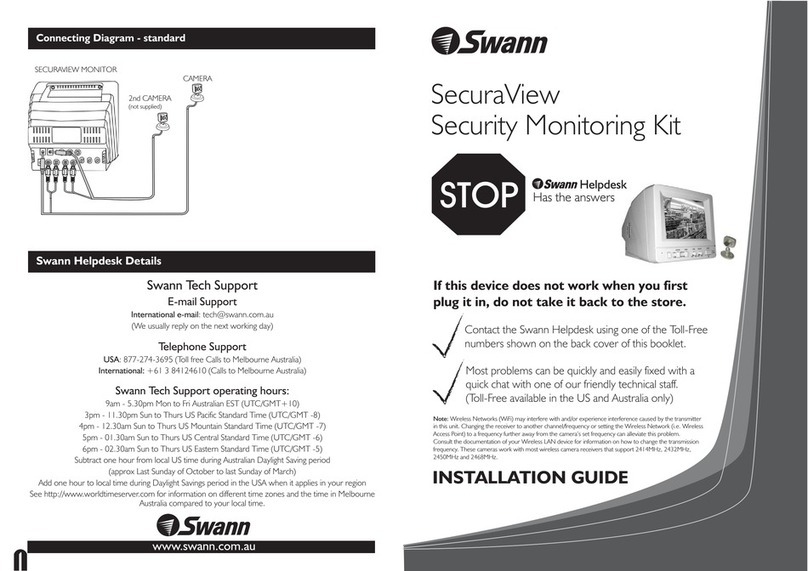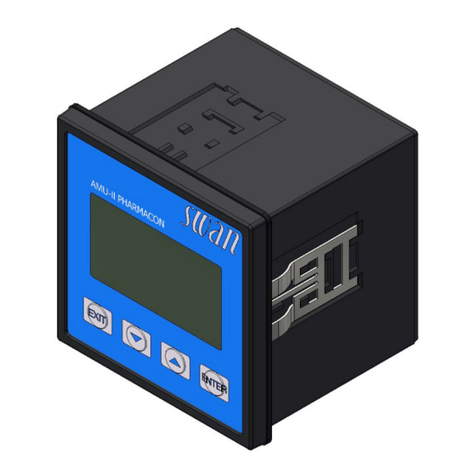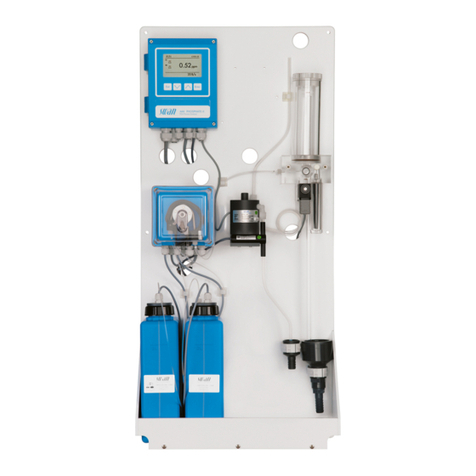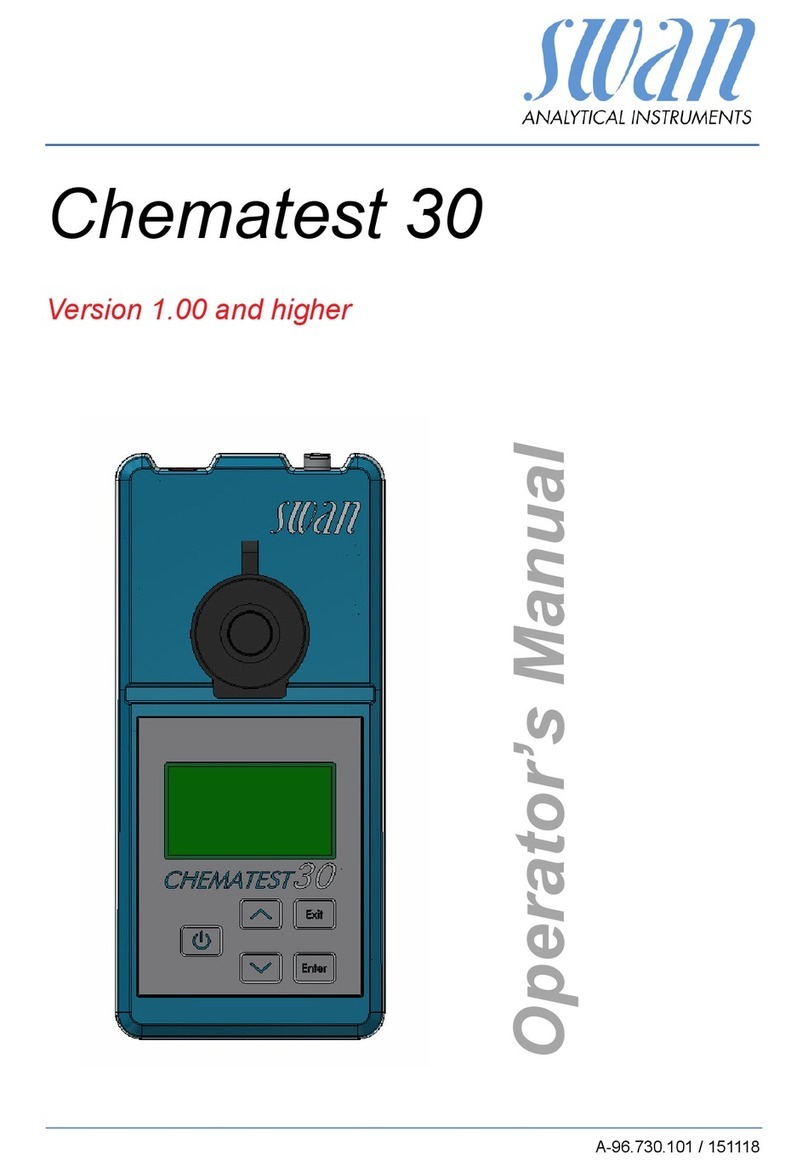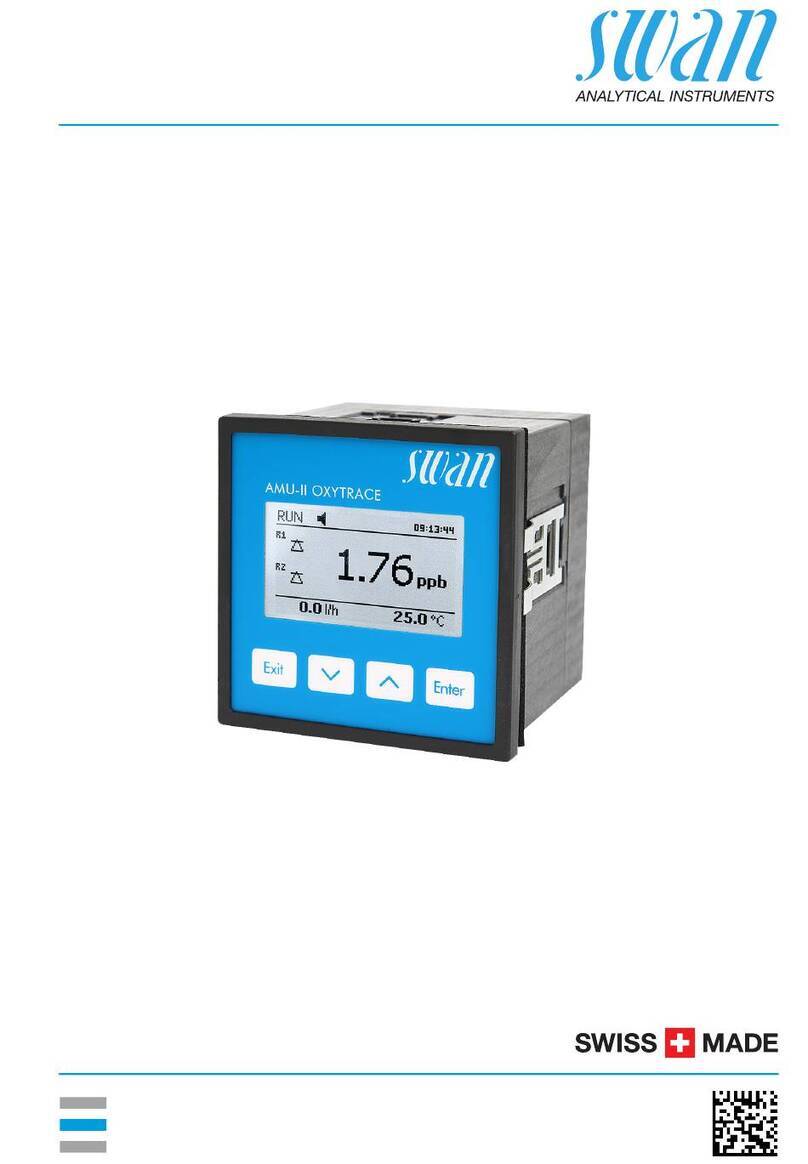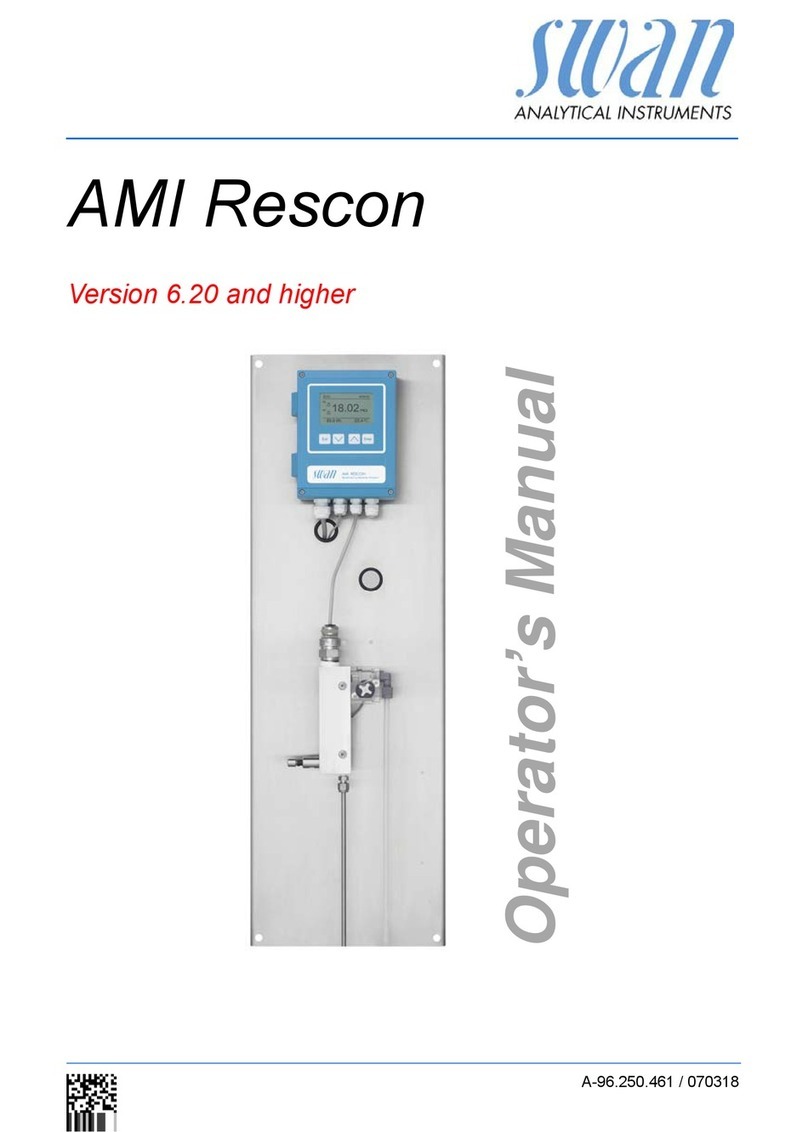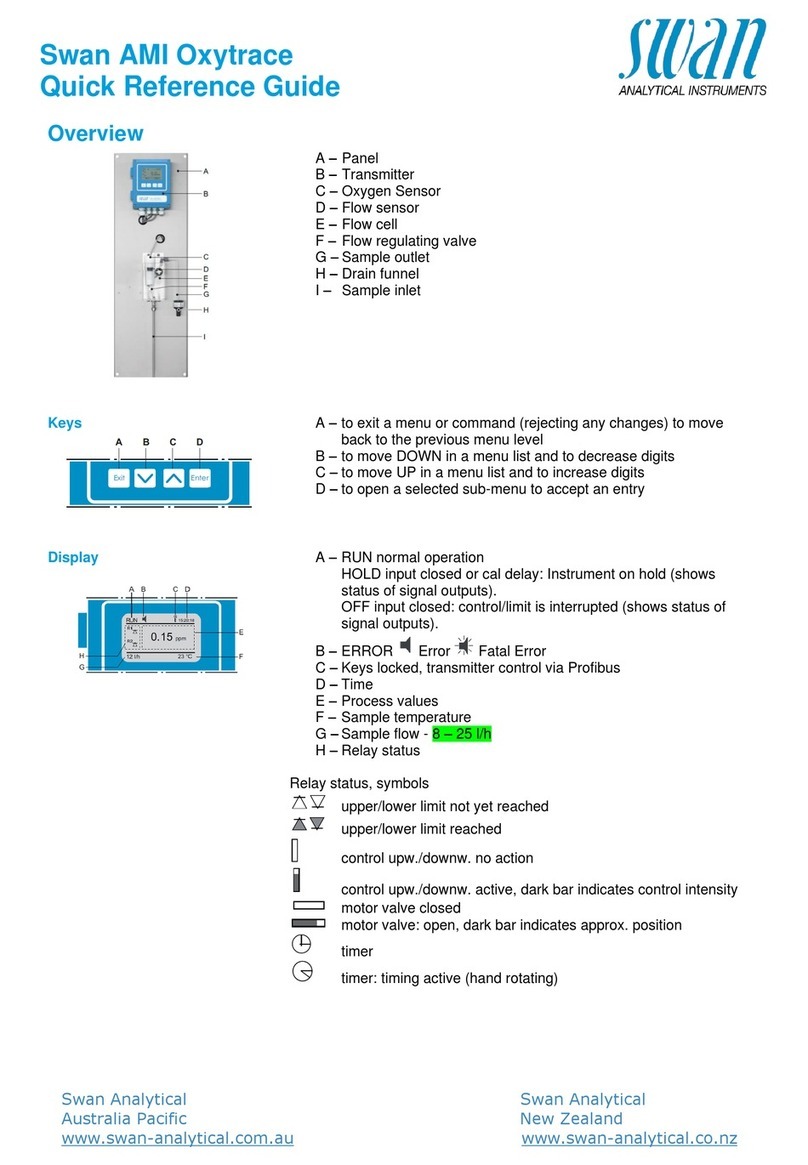
A-96.250.211 / 171121
AMI Sodium P
4
4. Instrument Setup . . . . . . . . . . . . . . . . . . . . . . . . . . . . . . . . . . . . . . . . . . . . . . . 50
4.1. Installing the Reagent Bottle . . . . . . . . . . . . . . . . . . . . . . . . . . . . . . . . . . . . . . . 50
4.2. Installing the Regeneration Solution Bottle . . . . . . . . . . . . . . . . . . . . . . . . . . . . 51
4.3. Establish Sample Flow. . . . . . . . . . . . . . . . . . . . . . . . . . . . . . . . . . . . . . . . . . . . 52
4.4. Switch on Power . . . . . . . . . . . . . . . . . . . . . . . . . . . . . . . . . . . . . . . . . . . . . . . . 53
4.5. Programming . . . . . . . . . . . . . . . . . . . . . . . . . . . . . . . . . . . . . . . . . . . . . . . . . . . 53
4.6. Fill Tube of Automatic Regeneration Module . . . . . . . . . . . . . . . . . . . . . . . . . . . 53
4.7. Perform a Calibration . . . . . . . . . . . . . . . . . . . . . . . . . . . . . . . . . . . . . . . . . . . . . 53
5. Operation . . . . . . . . . . . . . . . . . . . . . . . . . . . . . . . . . . . . . . . . . . . . . . . . . . . . . 54
5.1. Keys, Display . . . . . . . . . . . . . . . . . . . . . . . . . . . . . . . . . . . . . . . . . . . . . . . . . . . 54
5.2. Software Structure . . . . . . . . . . . . . . . . . . . . . . . . . . . . . . . . . . . . . . . . . . . . . . . 56
5.3. Changing Parameters and Values . . . . . . . . . . . . . . . . . . . . . . . . . . . . . . . . . . . 57
5.4. Grab Sample . . . . . . . . . . . . . . . . . . . . . . . . . . . . . . . . . . . . . . . . . . . . . . . . . . . 58
6. Maintenance . . . . . . . . . . . . . . . . . . . . . . . . . . . . . . . . . . . . . . . . . . . . . . . . . . . 60
6.1. Maintenance Schedule. . . . . . . . . . . . . . . . . . . . . . . . . . . . . . . . . . . . . . . . . . . . 60
6.2. Stop of Operation for Maintenance . . . . . . . . . . . . . . . . . . . . . . . . . . . . . . . . . . 61
6.3. Maintenance of Sodium Electrode . . . . . . . . . . . . . . . . . . . . . . . . . . . . . . . . . . . 62
6.4. Maintenance of Reference Electrode. . . . . . . . . . . . . . . . . . . . . . . . . . . . . . . . . 64
6.5. Maintenance of pH Sensor. . . . . . . . . . . . . . . . . . . . . . . . . . . . . . . . . . . . . . . . . 65
6.6. Maintenance of Solenoid Valve . . . . . . . . . . . . . . . . . . . . . . . . . . . . . . . . . . . . . 66
6.6.1 2nd Sample Stream Option . . . . . . . . . . . . . . . . . . . . . . . . . . . . . . . . . . . . . . . 66
6.6.2 Automatic Regeneration Option . . . . . . . . . . . . . . . . . . . . . . . . . . . . . . . . . . . 68
6.7. Maintenance of Flow Cell and Constant Head. . . . . . . . . . . . . . . . . . . . . . . . . . 70
6.7.1 Cleaning the Flow cell. . . . . . . . . . . . . . . . . . . . . . . . . . . . . . . . . . . . . . . . . . . 71
6.7.2 Cleaning the Constant Head. . . . . . . . . . . . . . . . . . . . . . . . . . . . . . . . . . . . . . 72
6.8. Replacing the Air Filter. . . . . . . . . . . . . . . . . . . . . . . . . . . . . . . . . . . . . . . . . . . . 74
6.9. Preparing the Standard . . . . . . . . . . . . . . . . . . . . . . . . . . . . . . . . . . . . . . . . . . . 75
6.10. Calibration . . . . . . . . . . . . . . . . . . . . . . . . . . . . . . . . . . . . . . . . . . . . . . . . . . . . . 76
6.10.1 pH Process Calibration . . . . . . . . . . . . . . . . . . . . . . . . . . . . . . . . . . . . . . . . . . 76
6.10.2 Standard Sodium 1-Point Calibration . . . . . . . . . . . . . . . . . . . . . . . . . . . . . . . 77
6.10.3 2-Point Calibration . . . . . . . . . . . . . . . . . . . . . . . . . . . . . . . . . . . . . . . . . . . . . 79
6.11. Tube Replacement. . . . . . . . . . . . . . . . . . . . . . . . . . . . . . . . . . . . . . . . . . . . . . . 80
6.11.1 Tube Numbering . . . . . . . . . . . . . . . . . . . . . . . . . . . . . . . . . . . . . . . . . . . . . . . 80
6.11.2 Replacing the Reaction Tube . . . . . . . . . . . . . . . . . . . . . . . . . . . . . . . . . . . . . 81
6.11.3 Replacing the EPDM Seal and the Air Inlet Tube. . . . . . . . . . . . . . . . . . . . . . 82
6.12. Longer Stop of Operation. . . . . . . . . . . . . . . . . . . . . . . . . . . . . . . . . . . . . . . . . . 83
7. Troubleshooting. . . . . . . . . . . . . . . . . . . . . . . . . . . . . . . . . . . . . . . . . . . . . . . . 84
7.1. Error List. . . . . . . . . . . . . . . . . . . . . . . . . . . . . . . . . . . . . . . . . . . . . . . . . . . . . . . 84
7.2. Automatic Regeneration. . . . . . . . . . . . . . . . . . . . . . . . . . . . . . . . . . . . . . . . . . . 87
7.3. Replacing Fuses . . . . . . . . . . . . . . . . . . . . . . . . . . . . . . . . . . . . . . . . . . . . . . . . 88

